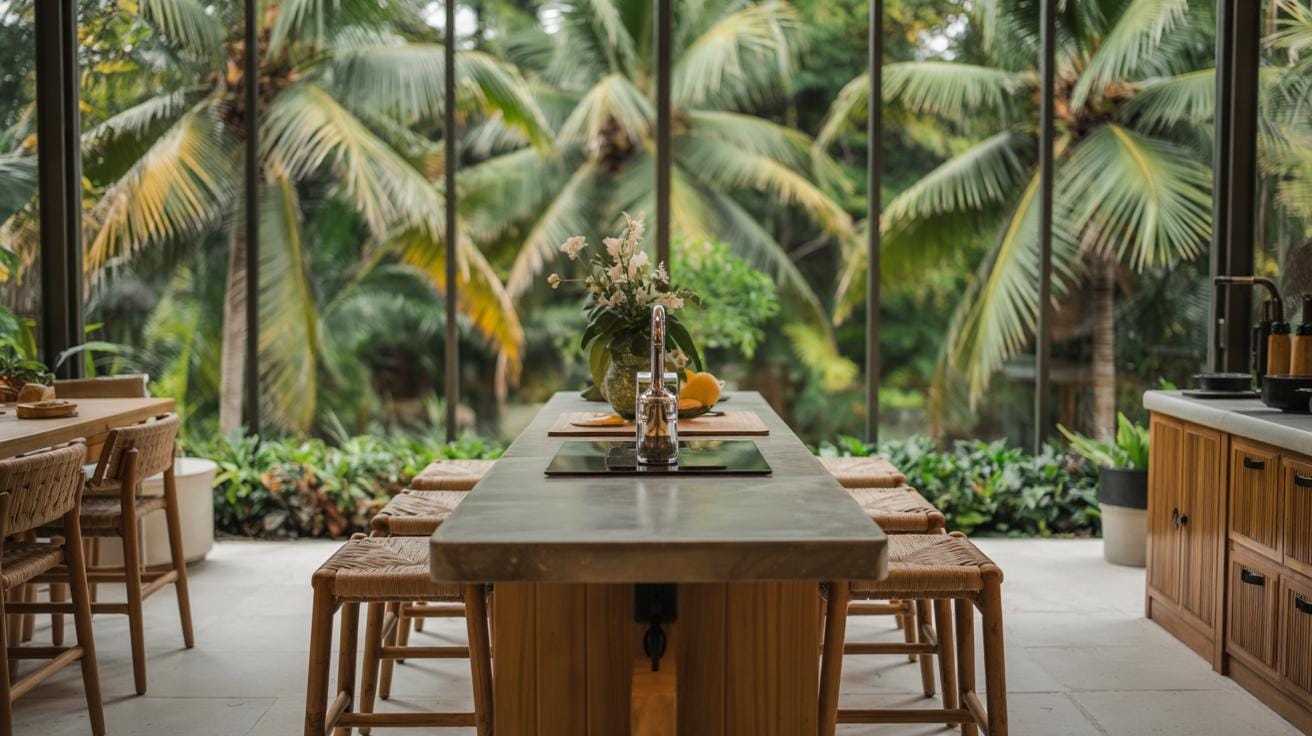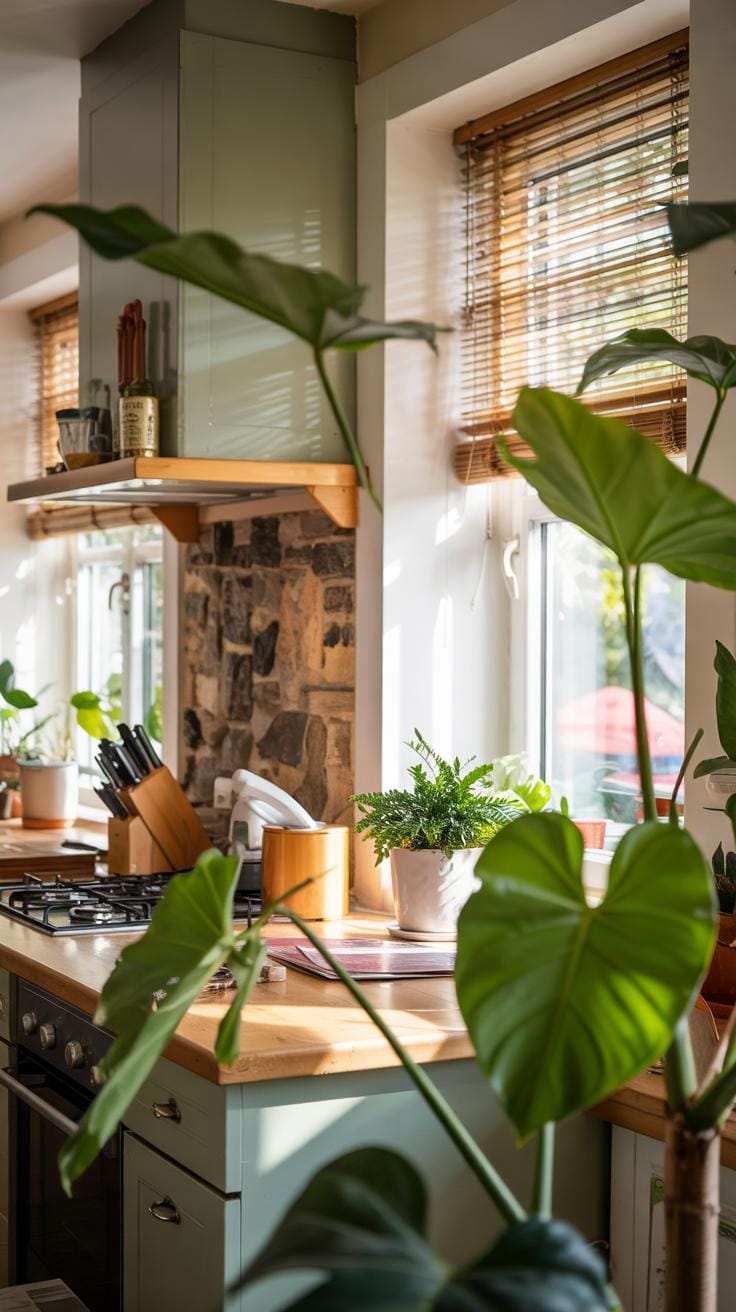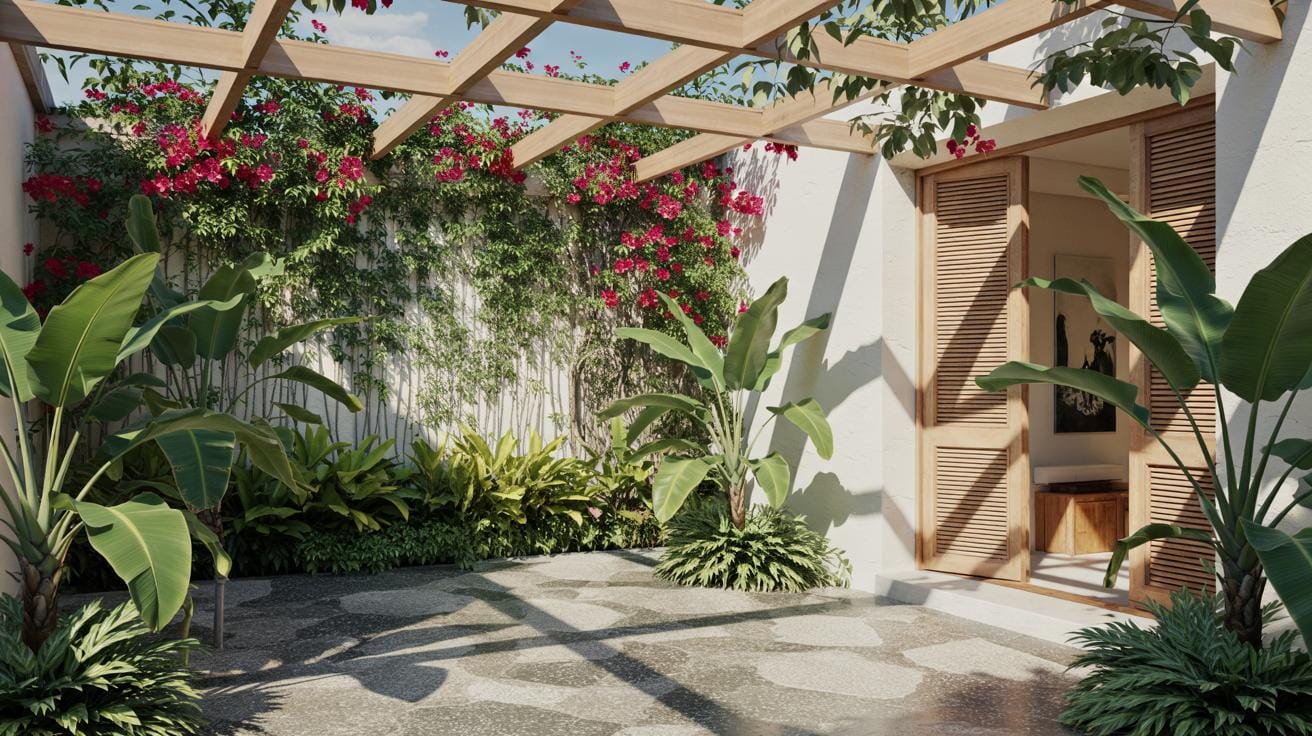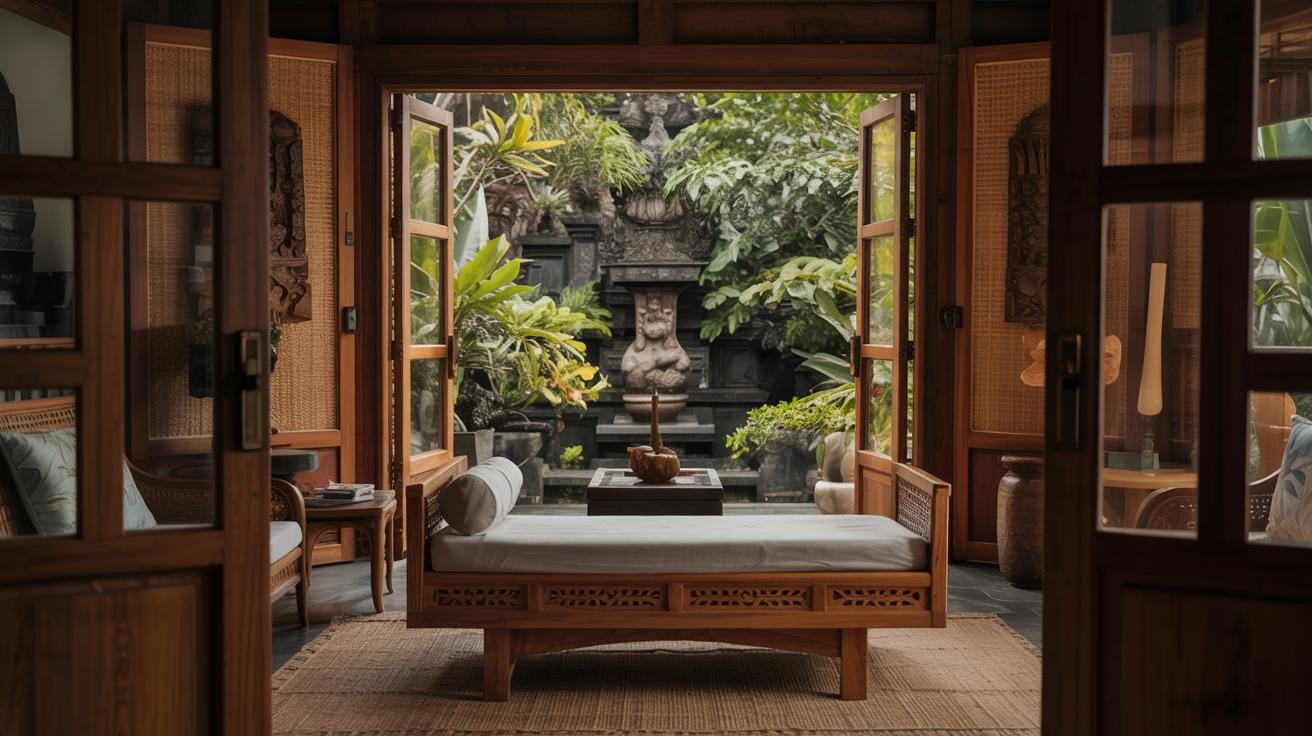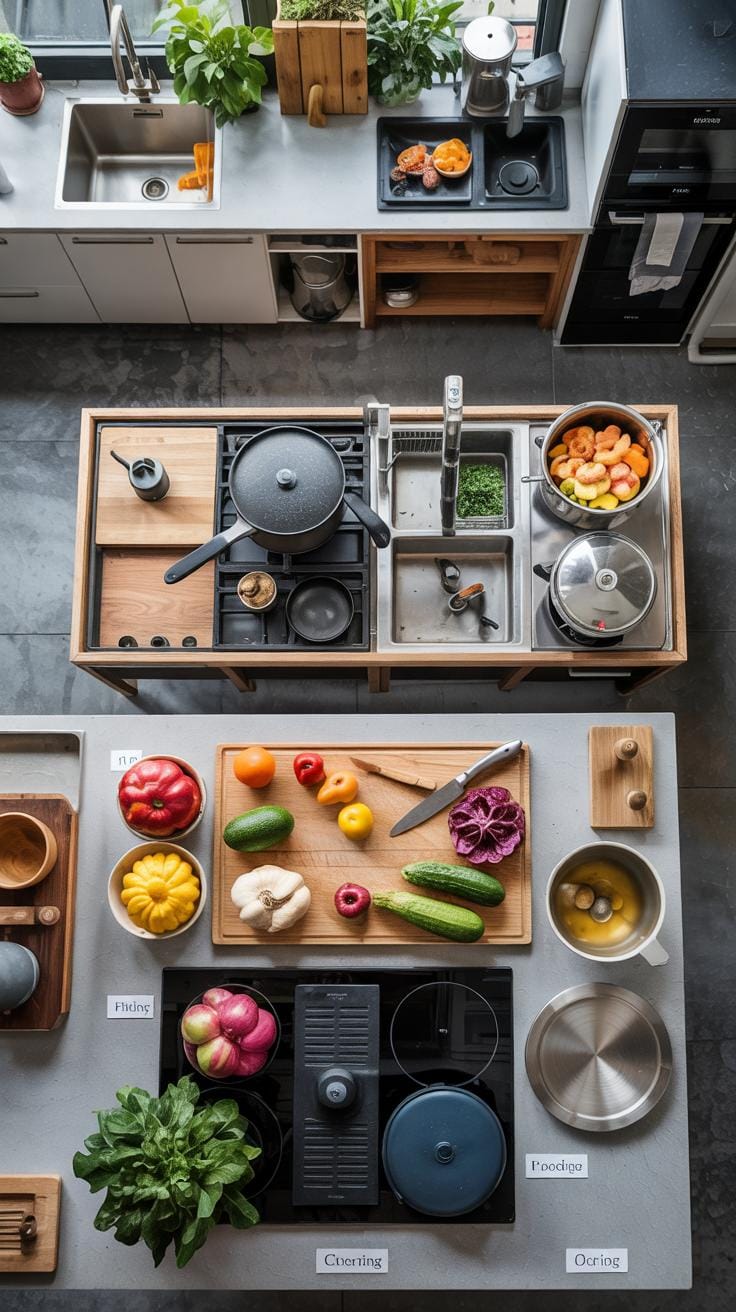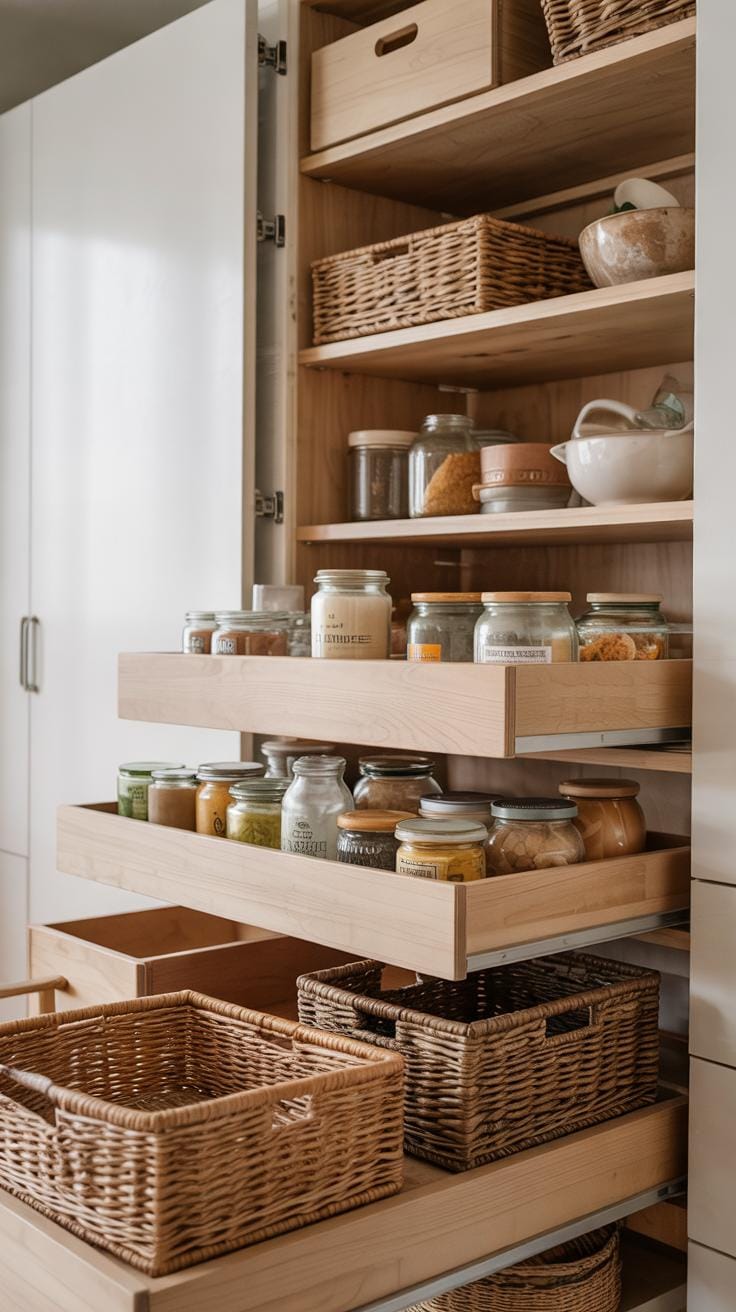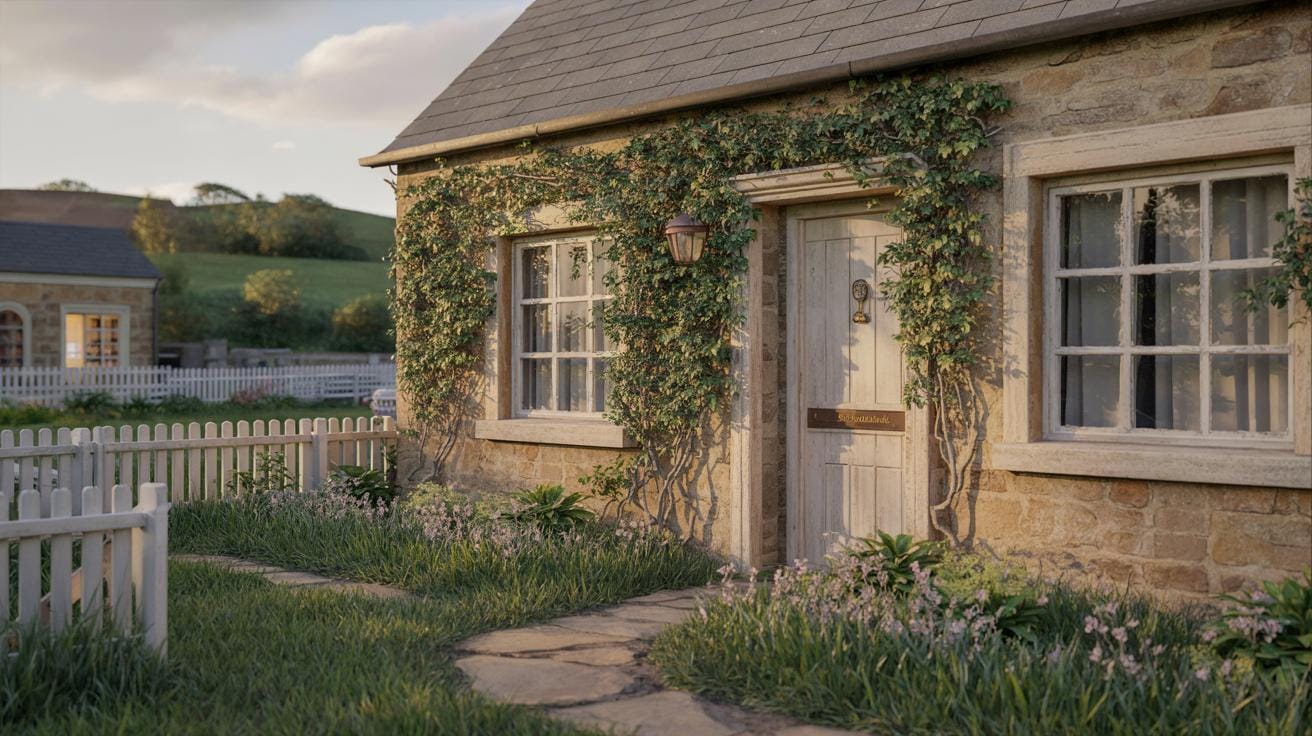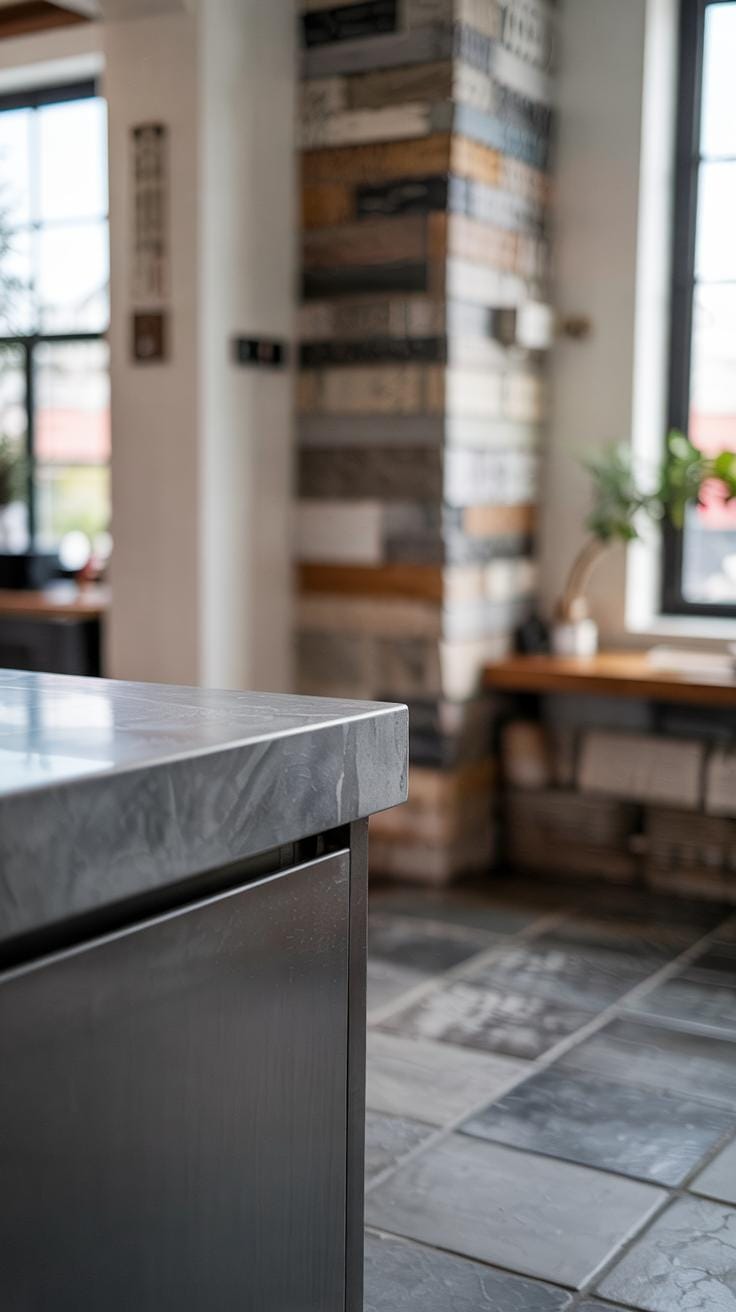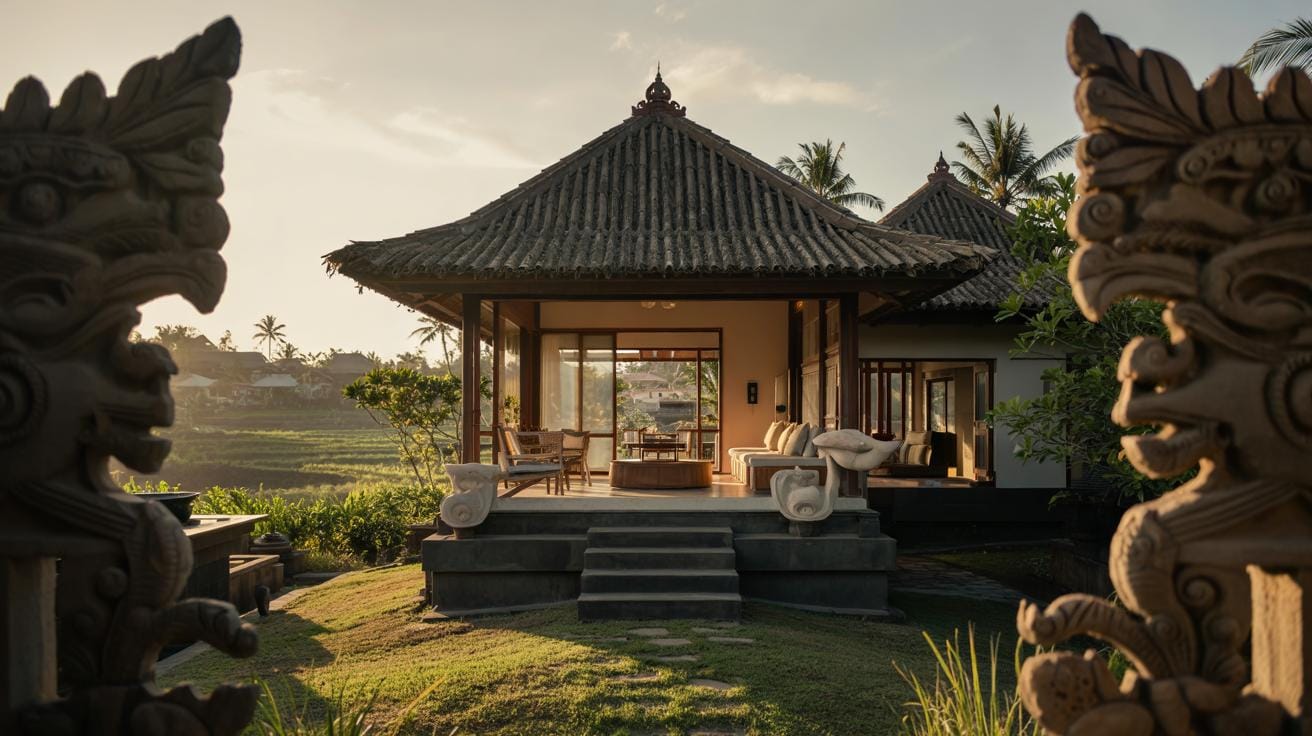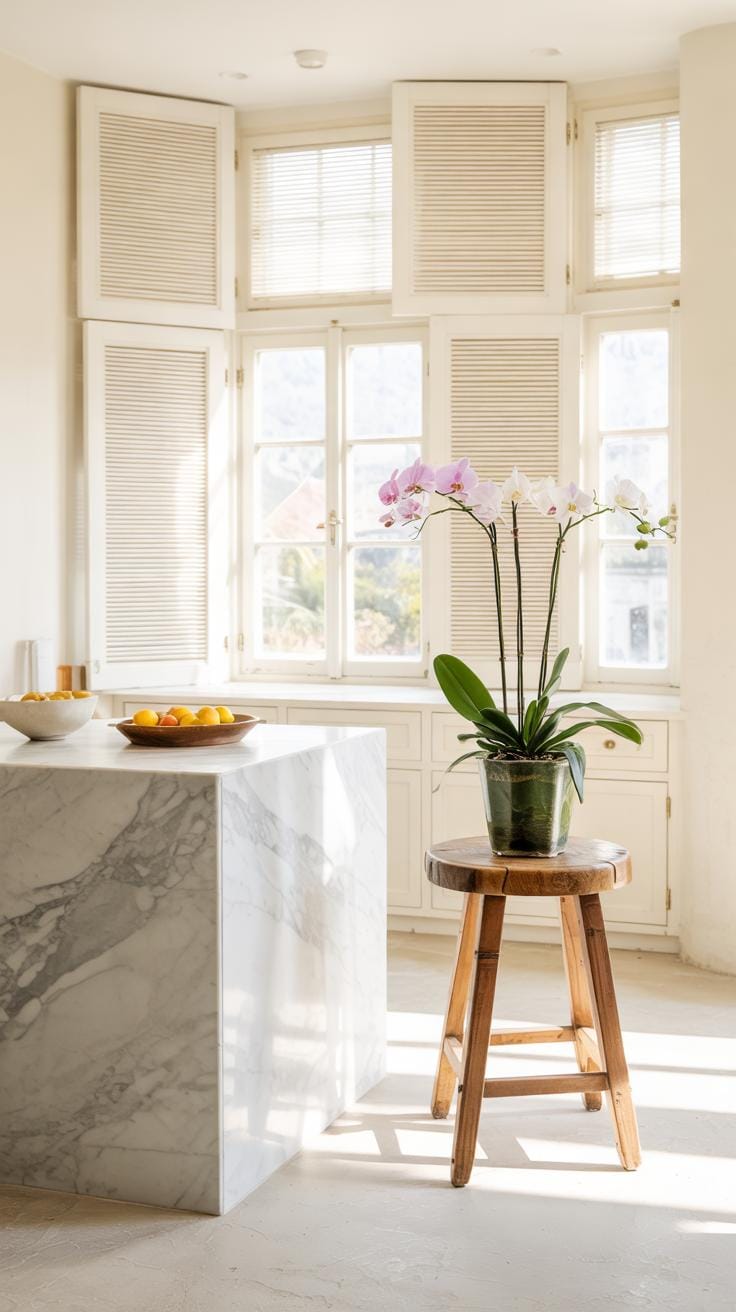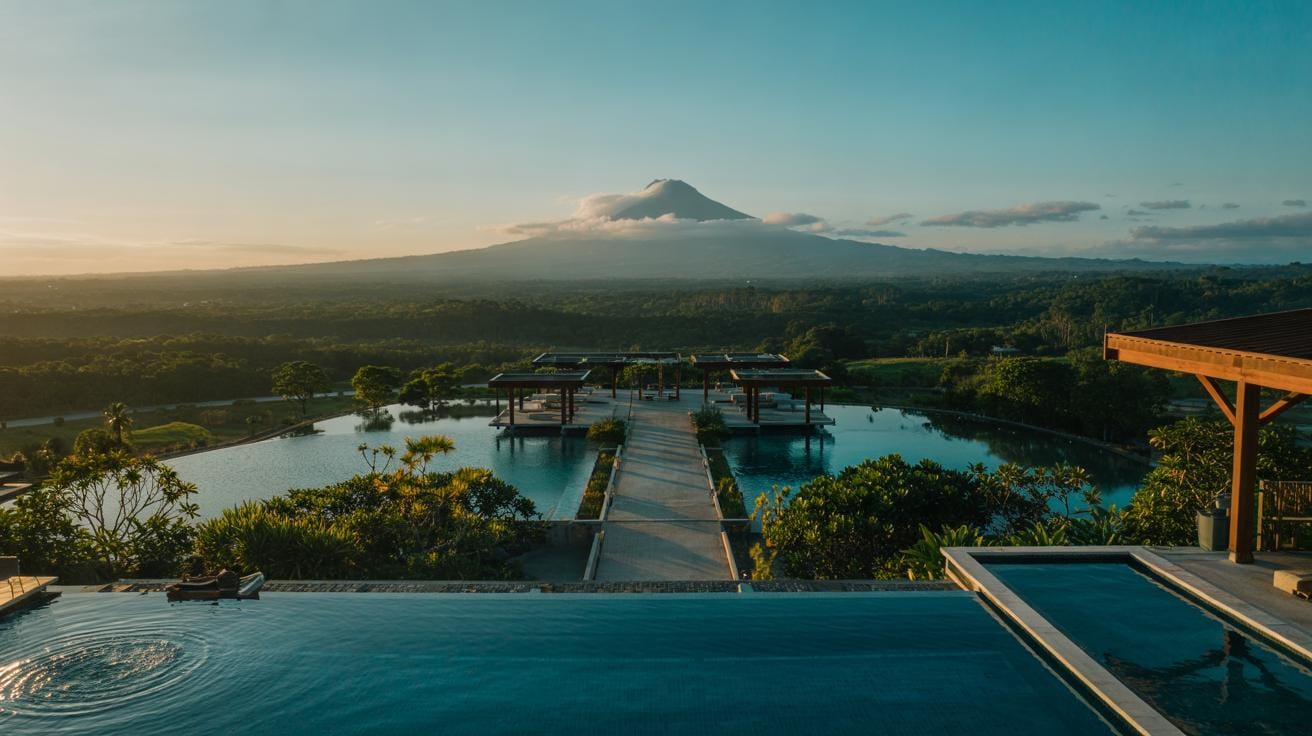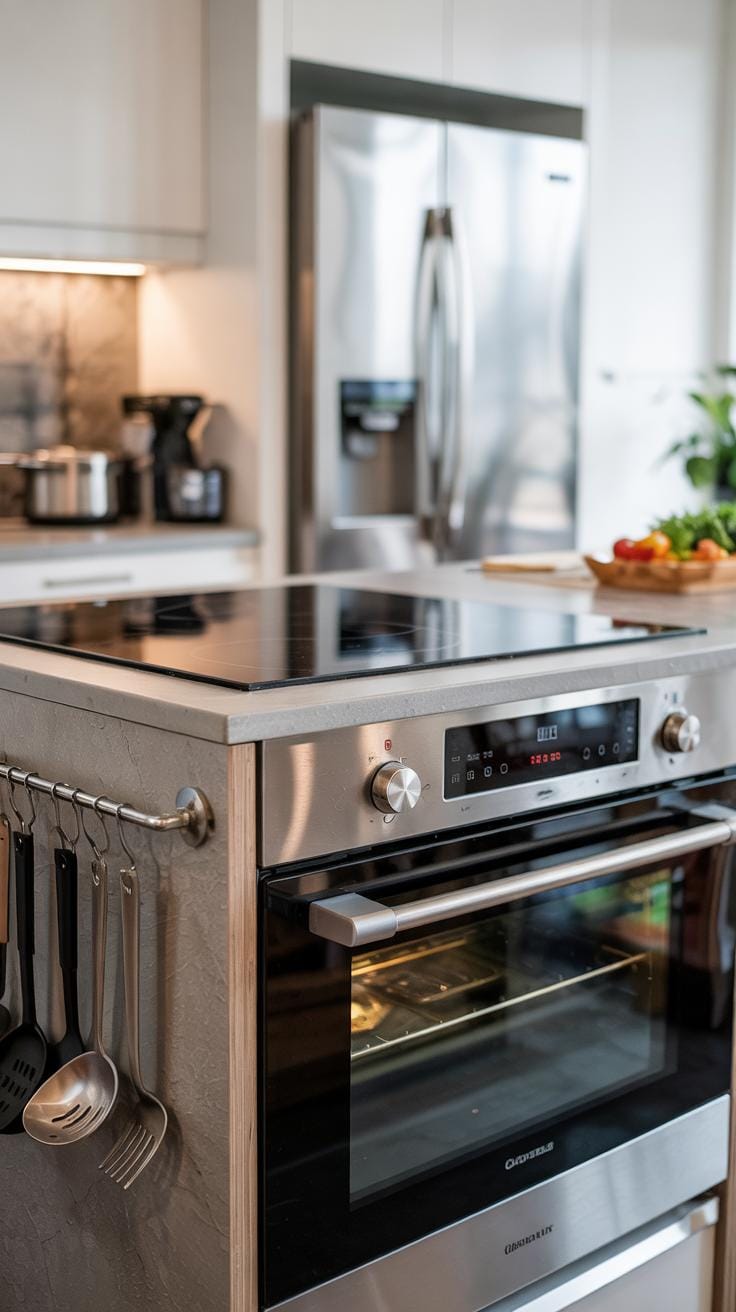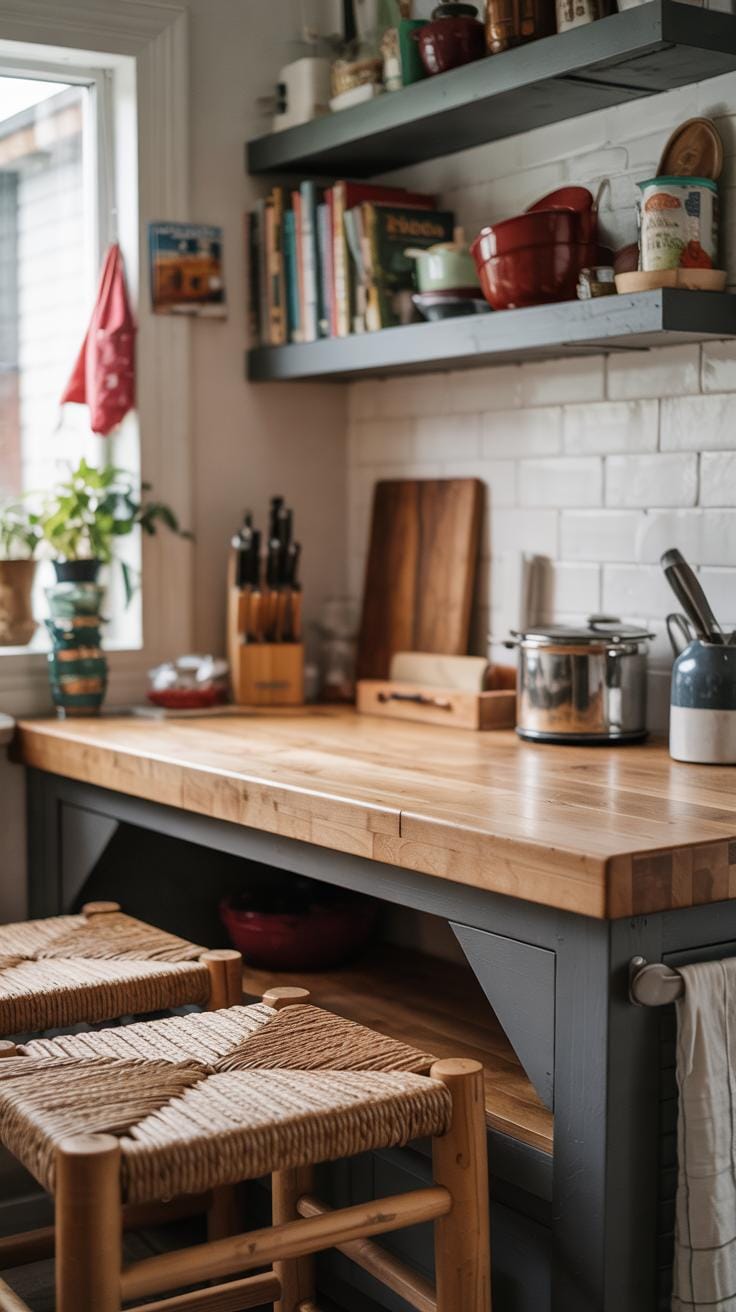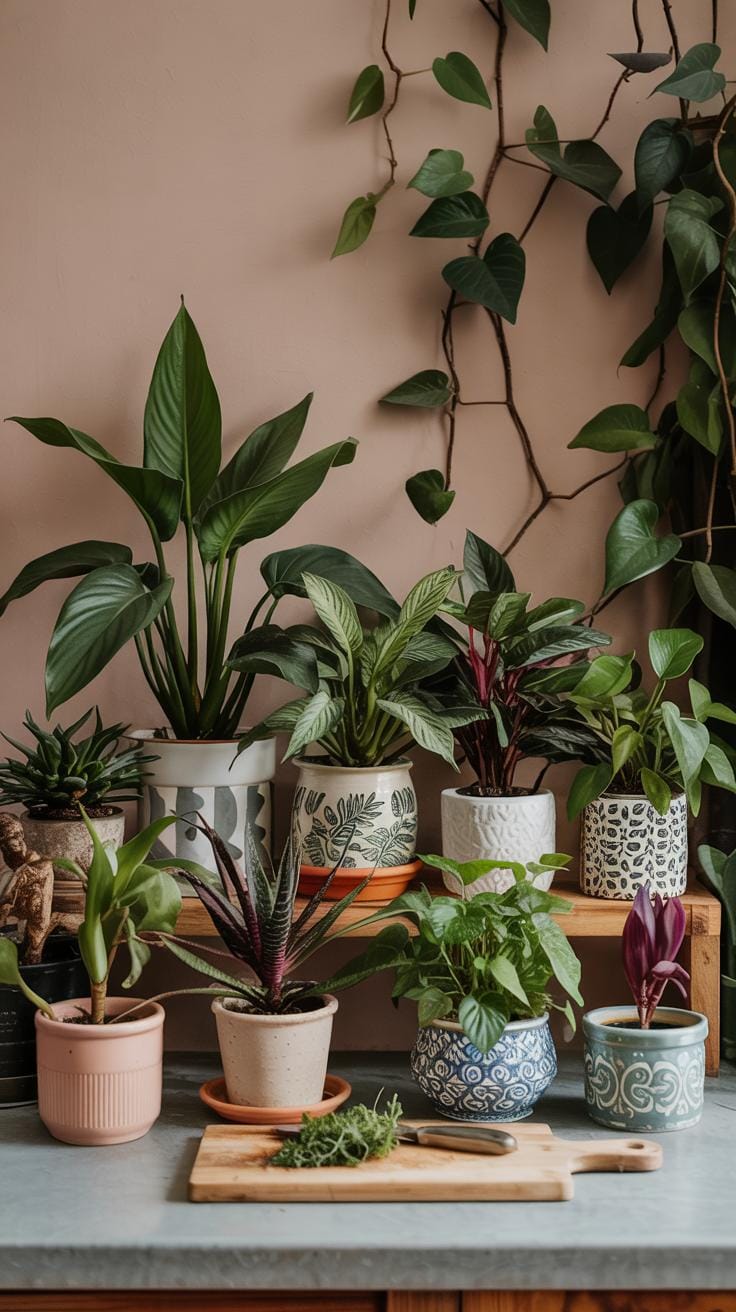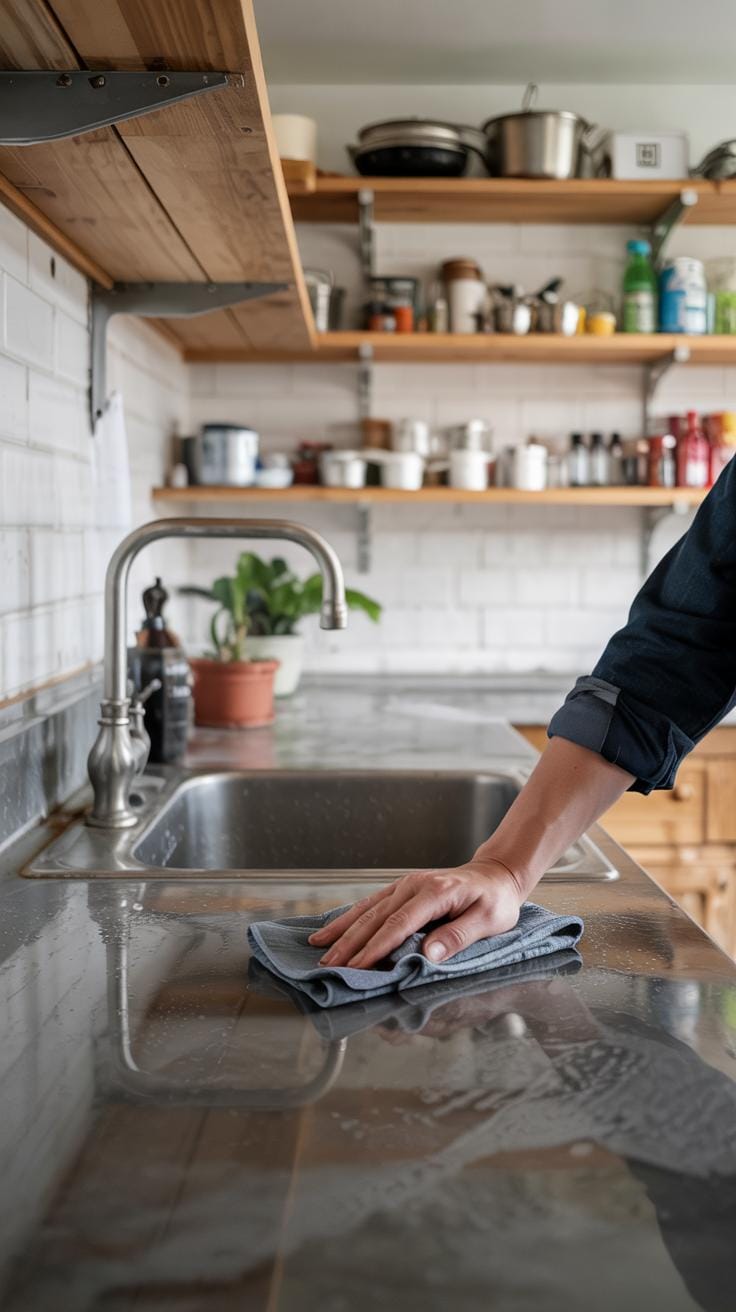Introduction
A kitchen in a tropical setting offers unique opportunities and challenges. You need a space that functions well amid warm temperatures and humidity. Your tropical kitchen should make food preparation enjoyable, efficient, and comfortable. It should look inviting and fit naturally with the tropical environment. These goals require thoughtful design focused on layout and materials that withstand tropical conditions.
Understanding how to arrange your kitchen elements is key. By applying functional layout hacks, you can maximize space, airflow, and storage. This article covers essential design tips for creating a practical tropical kitchen. You will learn how to adapt your kitchen to local climate and lifestyle needs. Are you ready to enhance your tropical kitchen with smart, actionable ideas that keep your space fresh and efficient?
Understanding the Tropical Kitchen Environment
The tropical climate shapes your kitchen design through constant heat and high humidity. These conditions test every material and fixture you choose. The temperature often stays warm, making it necessary to think about heat resistance.
High humidity encourages moisture buildup, which can lead to mold and damage to less durable materials. This means your kitchen needs surfaces and storage that withstand dampness without warping or deteriorating.
Airflow plays a vital role in keeping a tropical kitchen comfortable and safe. Without proper airflow, heat and moisture accumulate, making the space unpleasant and increasing pests or mildew risks. You need to plan for steady ventilation to move hot, humid air outside while fresh breezes come in.
How can you make your kitchen a space that manages heat and moisture effectively? The next sections will help you focus on picking the right materials and ensuring airflow keeps the room fresh and functional.
Impact of Climate on Kitchen Materials
In tropical kitchens, humidity and heat damage many common materials quickly. Wood may warp or swell, and paint can peel or bubble. Laminates may loosen or discolor under constant moisture.
You want materials that resist moisture and heat naturally. Stainless steel remains strong and rust-resistant. Ceramic tiles handle humidity well and stay cool. Stone countertops like granite or quartz do not absorb moisture and are easy to clean.
For cabinets, consider marine plywood or treated hardwood designed for wet environments. Avoid MDF or particleboard as they swell rapidly when damp.
Finishes like waterproof paints or sealants add extra protection. They help surfaces repel moisture and hold up against heat damage.
Which surfaces in your kitchen face the most humidity? Focus on selecting the most durable, moisture-resistant materials for those areas first.
Ventilation Needs in Tropical Kitchens
Ventilation keeps your kitchen from becoming stuffy and prevents moisture buildup. Without it, humidity leads to mold, stains, and unpleasant odors.
Natural ventilation uses windows, doors, and vents that encourage cross-breezes. Position openings on opposite walls or high and low spots to let hot, humid air escape and cooler air enter.
If natural airflow isn’t enough, mechanical ventilation like exhaust fans or range hoods can pull out heat and steam. Consider models with timers or humidity sensors to run only when needed.
Ceiling fans help move air and lower perceived temperature. They work well alongside ventilation systems to keep air circulating.
What ventilation options exist in your kitchen now? Could rearranging windows or adding fans improve airflow and reduce humidity naturally?
Planning Your Kitchen Layout Based on Use
Think about how you cook and how many people live in your home before deciding your kitchen layout. If your household is large or you cook often, the space needs to support multiple tasks happening at once. A single cook in a small family may not need as much counter space or separate work areas. Reflect on the kind of meals you prepare and how you move around the kitchen. Do you prefer quick meals, or do you enjoy lengthy cooking sessions? This influences where you place appliances and counters. A properly planned layout reduces unnecessary steps, saving time and energy. When you tailor your kitchen to the way you use it, every square foot serves a purpose. Can your kitchen support your daily cooking habits without feeling crowded?
Work Triangle and Workflow Zones
The work triangle links the sink, stove, and refrigerator. This classic idea helps you move quickly between key cooking points. In a tropical kitchen, it’s best to keep this triangle compact but not cramped. Make sure each leg of the triangle measures between 4 and 9 feet. Too close means little workspace; too far wastes effort. Consider placing the sink near a window for airflow and natural light, helping with the tropical climate. Arrange the stove away from direct sunlight to keep cooking cooler. By organizing these points efficiently, you reduce unnecessary walking and improve your kitchen’s flow. How smooth is your movement when you prepare meals?
Customizing Zones for Prep, Cooking and Cleaning
Divide your kitchen into clear areas for preparing, cooking, and cleaning. Each zone functions best when dedicated to one task. Locate prep areas close to the fridge and sink, where ingredients are washed and cut. The cooking zone centers on the stove or oven, with easy access to utensils and spices. Cleaning should have a set space around the sink with trash and recycling nearby. Defining these zones prevents clutter and keeps counters clear. It also lets multiple people work together without getting in each other’s way. When zones are organized, your kitchen feels larger and runs smoother. What can you change today to better separate your kitchen tasks?
Maximizing Space With Smart Storage Solutions
Keeping your tropical kitchen organized is key to making it work for you. Clutter can quickly take over, especially where space is limited. Plan your storage by grouping items based on how often you use them. Store daily essentials within easy reach and tuck away less-used gadgets. Clear containers help you spot ingredients at a glance, cutting down search time. Consider drawers with built-in dividers for utensils and spice racks that slide out. When storage fits your routine, cooking feels less stressful and cleanup happens faster.
Utilizing Vertical Storage
Vertical storage makes the most of your kitchen’s height without crowding the floor. Installing tall cabinets up to the ceiling adds storage without widening the footprint. Open shelves can hold plants or frequently used dishes, adding character while saving space inside cabinets. Hooks under shelves or inside cabinet doors keep pots, pans, and mugs handy. Have you measured your wall height? This simple step can reveal untapped space above your countertops ready to be used efficiently.
Incorporating Multi-functional Furniture
Furniture that serves more than one purpose increases flexibility in a tropical kitchen. Foldable tables and movable kitchen islands adapt to your cooking and dining needs, freeing up space when not in use. These pieces can offer hidden storage like drawers or shelves for pots, pans, or small appliances. Try using a rolling island with a butcher block top that doubles as extra counter space. How often do you need extra workspace versus open floor area? Choose furniture that fits your patterns and maximizes every inch.
Selecting Durable and Practical Materials
Choosing materials that stand up to tropical weather helps your kitchen last longer and stay looking good. Cabinets, countertops, and floors face high humidity, heat, and pests like termites. You want options that handle moisture without warping or rotting.
Cabinets should be made from treated wood or composite materials designed for tropical climates. These resist moisture better than regular wood and lower the chance of termite damage. Floors with similar water resistance work best, especially ones that handle spills and humidity without swelling.
Think about how often you use your kitchen and what types of wear and tear happen daily. Will you handle many hot pots or expect frequent cleaning? The right materials fit your lifestyle and the climate. That decision simplifies care and keeps your kitchen practical for years.
Water-resistant Cabinet and Flooring Options
Marine plywood is a solid choice for cabinets in tropical kitchens. It’s thicker and treated to resist water and pests. Composite boards with a waterproof laminate finish also work well. These materials don’t absorb moisture like untreated wood.
For flooring, vinyl planks made for high humidity are affordable and easy to clean. Bamboo, when properly sealed, offers a natural look and stands up to moisture better than many hardwoods. Porcelain tiles made for outdoor use resist water and are termite-proof.
These materials keep cabinets and floors stable and safe from the challenges of tropical environments. They make daily cleaning easier and reduce worries about long-term damage.
Countertop Materials for Durability and Maintenance
Granite and quartz countertops handle heat and humidity well without staining or cracking. Granite is natural stone with unique patterns, while quartz is engineered for consistent durability. Both need minimal sealing but resist moisture better than softer stones.
Concrete countertops offer toughness but require regular sealing to prevent water absorption. Laminates with waterproof cores provide a budget-friendly alternative that is easy to maintain, though less heat-resistant.
Consider your cooking habits and cleaning routines when choosing countertops. Materials that require less upkeep free you from constant worry and fit the active lifestyle of tropical kitchens.
Incorporating Natural Light and Ventilation
Natural light brightens your tropical kitchen, making it easier to work and reducing the need for artificial lighting. It also creates a fresh and inviting space where cooking feels less tiring. Position your kitchen near open areas or use large windows to let in sunlight while preventing direct heat. Using sheer curtains or blinds helps control glare without blocking light.
Good ventilation removes heat and cooking odors, which are common in humid tropical climates. Proper airflow keeps the kitchen cooler and prevents moisture buildup that can damage surfaces and promote mold. You can combine natural ventilation with mechanical systems to maintain comfort and save energy.
How does your kitchen design bring in sunlight and air? Have you noticed how better airflow improves your cooking experience in humid weather?
Window Placement and Size
Place windows on opposite walls or near the cooking area to create cross ventilation. Choose window sizes that provide enough airflow and daylight but avoid large panes that invite excessive heat. Narrow, tall windows or adjustable louvered windows work well here.
A window over the sink or stove lets fresh air flow directly where you need it most. Consider window orientation: north or south-facing windows reduce harsh sunlight, while east or west-facing ones need shading to limit heat. Using insect screens ensures ventilation without pests.
Have you tested different window types to find the balance between light, airflow, and heat? Small changes in window design can make a big difference in your kitchen’s comfort.
Using Ventilation Fans and Exhaust Hoods
Ventilation fans help pull out heat and odors quickly. Choose fans rated for high humidity and tropical temperatures to avoid early wear. Exhaust hoods installed above stoves capture smoke and cooking smells better when vented outside.
Look for fans with adjustable speeds so you can control airflow based on cooking intensity. Ceiling fans or wall-mounted exhaust fans placed near cooking zones improve air circulation. A good-quality range hood with a powerful motor reduces grease buildup too.
How often do you use your kitchen fans during cooking? Upgrading to energy-efficient models can reduce heat and keep your kitchen fresh without increasing your energy bill.
Optimizing Appliance Selection and Placement
Energy-efficient Appliances
Choosing energy-efficient appliances helps you save electricity and reduce heat buildup in your tropical kitchen. Look for refrigerators and stoves with high energy ratings. These appliances use less power while keeping your food fresh and cooking efficiently.
Energy-saving refrigerators run cooler inside but produce less heat outside, which lowers your kitchen temperature. For cooking, induction stoves use electricity directly to heat pots and pans, generating less ambient heat than gas or traditional electric ranges. This means your kitchen stays more comfortable during hot weather.
Consider choosing appliances with smart settings. For example, refrigerators with adjustable cooling zones or stoves with automatic shut-off features prevent energy waste. Have you weighed the long-term savings against upfront costs when selecting appliances?
Strategic Appliance Location
Place heat-producing appliances away from natural ventilation sources to avoid warming the air your kitchen relies on for coolness. Keep the refrigerator near the kitchen entrance, so the door opens easily without disturbing cooking zones.
Position the stove where it receives good ventilation but not directly under sun-exposed windows or near the refrigerator. This reduces heat overlap and helps maintain an efficient workflow. Grouping appliances by function can speed up kitchen tasks and reduce unnecessary movement.
Think about the sequence you follow while cooking. Do your appliance placements match this flow? For example, situate the sink between the refrigerator and stove to simplify food prep and cleanup. Efficient placement keeps your tropical kitchen comfortable and functional throughout busy days.
Creating Comfortable Work Surfaces and Seating
Your kitchen should serve both as a workspace and a place to connect with others. Comfortable work areas help reduce strain during meal prep, especially in tropical climates where humidity and heat can tire you quickly. Proper surface height and material choice are key to making food preparation easier and keeping your kitchen cool.
Seating arrangements play a major role in making your kitchen feel welcoming. Whether you use bar stools or a nearby bench, seating should support quick chats, casual meals, or helping hands. This makes the kitchen more than just a cooking area—it becomes a social hub. When you design your space, consider how you move and interact. Does your seating encourage conversation or isolate guests? Comfort and function go hand in hand to make your tropical kitchen work for you.
Choosing Work Surface Heights and Materials
A comfortable counter height ranges from 36 to 38 inches for most people, making chopping and stirring easier without bending. You might want to customize heights if your family members vary in size or spend lots of time cooking. In tropical settings, select materials that stay cool and resist moisture.
Granite and quartz work well because they handle heat and humidity without warping. Concrete is another option that stays cool but requires sealing to avoid stains. Avoid wood surfaces where water and humidity can cause damage over time. Consider how often you prep meals and pick surfaces that are easy to clean and maintain despite tropical conditions.
Incorporating Seating That Encourages Social Interaction
Think about how seating can invite people to spend time in your kitchen. Bar stools at a counter allow guests to chat while you cook. A built-in bench along a wall can create a cozy spot for family meals or casual conversation. When space allows, position a small dining table close to the prep area to keep the social flow intact.
Choose seating options that match the kitchen’s style but focus on comfort. You want cushions that dry quickly, or easy-to-clean finishes for tropical weather. Seating arrangements should not block movement or work zones. How can you arrange seats to make chatting natural and convenient? This balance makes your kitchen both practical and inviting.
Adding Greenery and Decor That Suits the Tropics
Your tropical kitchen can become more inviting by bringing in natural elements that thrive in warm, humid conditions. Greenery adds a fresh look and improves air quality while fitting the tropical vibe. Think about small indoor plants that can stand the moisture and light levels common in kitchens near the coast or in warm climates. Placing them near windows or on shelves ensures they get enough light without taking up valuable counter space.
Choosing simple decor is key to keeping your kitchen functional. Avoid cluttering surfaces with too many items, especially those that absorb humidity or are hard to clean. Opt for natural textures like bamboo or rattan baskets to organize utensils and dry goods. Items that blend with the greenery and maintain a clean look keep the space feeling open and calm.
Have you considered how the right plants and decor might improve your cooking experience and mood? Small changes can create a more pleasant workspace for you and your family.
Selecting Indoor Plants for Tropical Kitchens
Select plants that handle both heat and humidity well. Snake plants, pothos, and spider plants fit this profile. These options need little care and keep growing even in less-than-ideal light. Their ability to withstand the kitchen’s steam and occasional fluctuations in temperature makes them reliable choices.
Place plants where they get indirect sunlight, like near windows with sheer curtains or on top of cabinets. Keep in mind that these plants benefit from occasional watering but do not like to sit in water. This balance prevents root rot and keeps them healthy.
Would adding low-maintenance green plants make your tropical kitchen more enjoyable and refreshing?
Choosing Simple Decor for Practicality and Style
Select decor that resists humidity to avoid mold and damage. Ceramic or glass jars with tight lids work great for storing dry ingredients and keep pests away. Woven bamboo trays and wooden cutting boards add texture and are easy to clean.
Avoid fabric items or delicate decorations on counters where steam accumulates. Instead, use wall-mounted shelves or hooks to hang pots, pans, or utensils. This saves surface space and keeps your kitchen tidy.
Consider how your kitchen looks and feels with fewer items but more purpose. What simple decor pieces would support your daily tasks while blending into the tropical design?
Maintaining Your Tropical Kitchen for Longevity
Your tropical kitchen faces unique challenges like high humidity, heat, and heavy rainfall. Keeping surfaces, appliances, and ventilation systems clean and well-maintained helps them last longer and keeps your kitchen comfortable to work in.
Choose materials designed to resist moisture and stains for your counters and cabinets, such as sealed granite or treated wood. Wipe spills quickly to prevent staining or warping. Appliances need regular cleaning to avoid rust and mechanical problems caused by moisture. Open windows or use exhaust fans during and after cooking to reduce humidity buildup.
Ask yourself which parts of your kitchen gather the most moisture? Focus your cleaning and ventilation efforts there. Keeping your kitchen dry and fresh will save you money on repairs and replacements. Small, regular maintenance tasks add up to big improvements over time.
Regular Cleaning to Prevent Mold and Mildew
Mold and mildew thrive in warm, humid environments like tropical kitchens. Create a cleaning routine that targets these problems before they take hold. Clean countertops, sinks, and cabinet corners daily with a mild detergent mixed with vinegar or a commercial anti-mold spray.
Use a scrub brush on grout and tile surfaces weekly to clear away any buildup. Wipe down walls and cabinets regularly to remove moisture residue. Avoid letting wet clothes or sponges sit out, as they encourage mold growth.
Consider using natural cleaning products that contain antimicrobial ingredients. They reduce mold risks without harsh chemicals. How often do you clean hidden spots like behind appliances? Make those places part of your routine to keep your kitchen mold-free throughout the year.
Seasonal Checks for Ventilation and Plumbing
Ventilation and plumbing systems in tropical kitchens require regular checks to prevent leaks, odors, and poor air quality. Inspect exhaust fans and vents every few months to ensure they are clear of dust and debris. Clean or replace filters as needed to maintain airflow.
Check pipes and faucets for leaks or signs of rust, which can worsen with humidity. Tighten loose fittings and replace damaged washers to avoid water damage. Flush drains with a mixture of baking soda and vinegar to prevent clogs caused by grease or organic buildup.
Each season brings different weather challenges that affect your kitchen systems. When did you last service your ventilation or plumbing? Staying ahead of issues can limit mold growth and keep air circulating well, making your kitchen healthier and more functional year-round.
Conclusions
Your tropical kitchen holds the potential to be both beautiful and practical. With sensible layout planning, you gain a space that supports your cooking habits and adapts to tropical climate challenges. Using the right materials and positioning plumbing and cooking zones wisely can improve comfort and durability. You can create a kitchen environment that balances ventilation, workspace, and storage effectively.
Keep analyzing how you use your kitchen and make ongoing adjustments to improve functionality. Thoughtful integration of appliances, work surfaces, and natural elements supports your daily needs. A tropical kitchen that works well invites you to spend more time cooking and connecting with family or friends. Use the ideas shared here to shape a kitchen that meets your unique requirements and brings efficiency to your tropical home.

